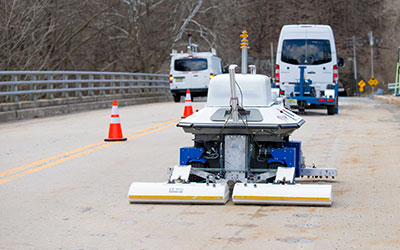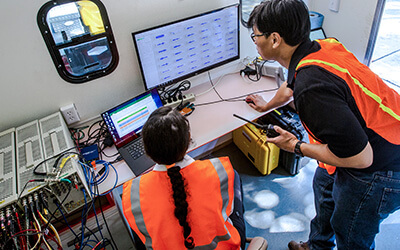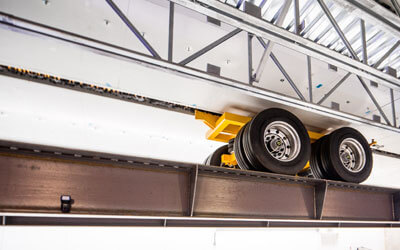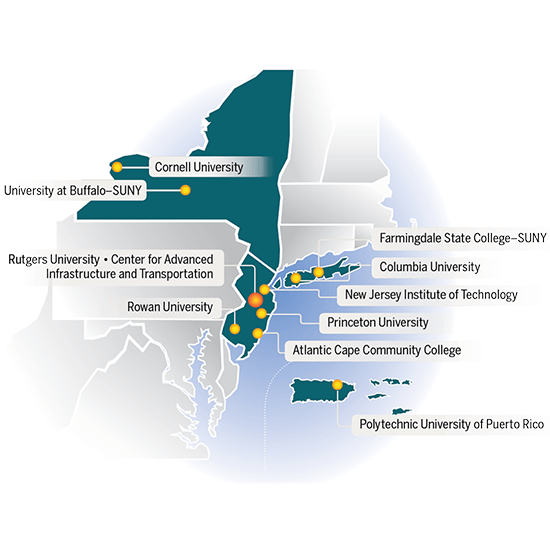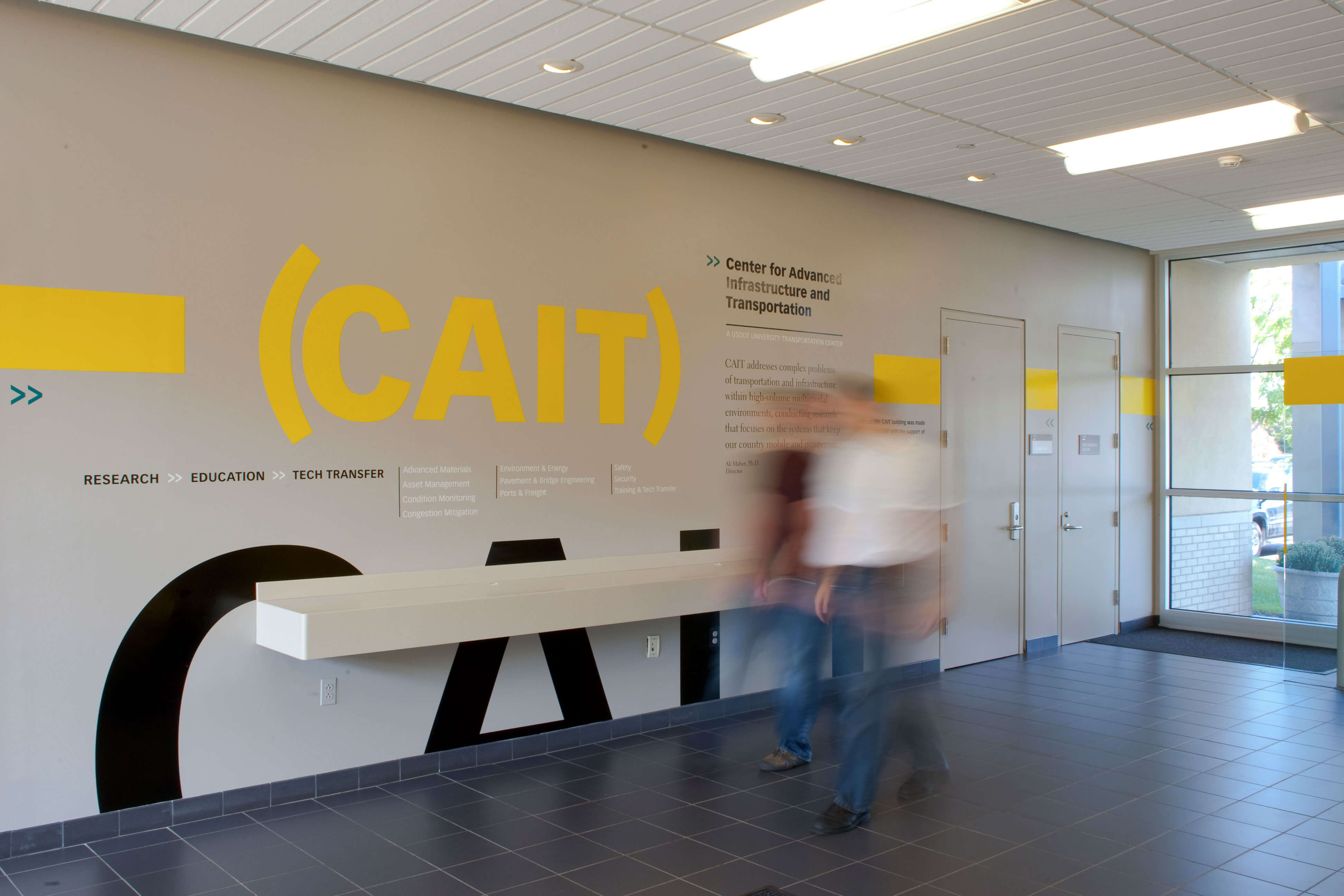CAIT® research focuses on preserving, rehabilitating, and improving infrastructure; boosting network resilience; reducing life-cycle costs; and increasing mobility and safety.
Rutgers Center for Advanced Infrastructure and Transportation® (CAIT) tackles some of the country’s most pressing infrastructure challenges, especially those that are endemic in high-volume multimodal corridors like the Northeast.
The bulk of our efforts fall within several broad areas: assessing and monitoring the health of bridges, roads, and pipelines; creating revolutionary technologies, materials, and tools; formulating strategies to prolong the service life of infrastructure; and training the current and future workforce.
CAIT develops practical tools and processes that can be applied—not in theory, not on paper, not five years in the future—but as mainstream tools in the hands of transportation professionals solving real-world problems right now.
Since 1998, CAIT has been a University Transportation Center (UTC)—an elite group of academic research institutions sanctioned and supported by the U.S. Department of Transportation. It was named one of only five National UTCs in 2013 and selected to lead the Region 2 UTC in 2018.
USDOT Region 2 UTC Consortium
Rutgers, The State University of New Jersey
Ali Maher, Director, CAIT
Professor, Department of Civil and Environmental Engineering
Atlantic Cape Community College
James Taggart, Professor
ISAS
Columbia University
Raimondo Betti, Professor
Civil Engineering and Engineering Mechanics
Cornell University
David P. Orr, Senior Extension Associate
Department of Biological and Environmental Engineering
Farmingdale State College–SUNY
Barbara Christie, Dean
School of Engineering Technology
New Jersey Institute of Technology
Matthew Bandelt, Assistant Professor
Department of Civil and Environmental Engineering
Polytechnic University of Puerto Rico
Héctor J. Cruzado, Ph.D., P.E., Professor and Department Head
Civil Engineering and Land Surveying
Princeton University
Branko Glišić,
Associate Professor
Department of Civil and Environmental Engineering
Rowan University
Mohammad Jalayer,
Associate Professor
Department of Civil and Environmental Engineering
University at Buffalo
–SUNY
Andrew Whittaker, Distinguished Professor
Department of Civil, Structural, and Environmental Engineering
CAIT profile at-a-glance
- Research capabilities in 12 critical infrastructure areas relating to all transportation modes
- Trained approximately 11,089 practicing transportation professionals annually (from 2018 – 2022)
- Inspected approximately 1.6 million square feet of bridge decks, 2011–2017
- Two-time winner of the prestigious ASCE Pankow Award for Innovation (2014 and 2017)
- Selected as a Beyond Traffic Innovation Center by former USDOT Secretary Anthony Foxx
- Has successfully competed and maintained its USDOT-designated University Transportation Center status since 1998
Human resources (as of Aug. 2022)
- 64 Professional and technical staff (self-supported with grants and contracts)
- 34 Rutgers full-time, tenured faculty researchers
- 148+ Affiliated research faculty and collaborators from other institutions
- 25 Continuing education/workforce training instructors
- ≈ 113 Full-time graduate assistants across the CAIT Consortium (annually)
- ≈ 125 Hourly undergraduate student research assistants across the CAIT Consortium (annually)
Physical facilities (across the CAIT Consortium)
-
111,294 square feet of condition assessment/nondestructive evaluation, structural health monitoring, pavement, advanced materials, and corrosion labs.
-
56,502 square feet of research and support offices.
-
35,182 square feet of workforce development and training space.

